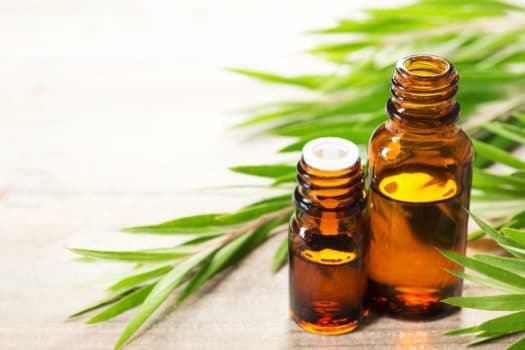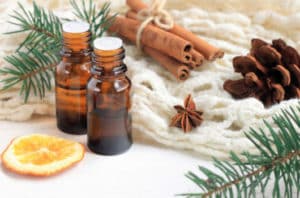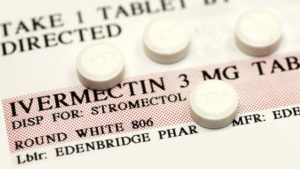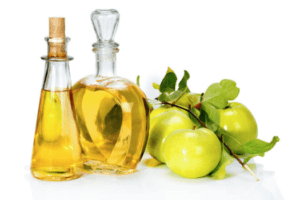Scabies home treatment Tea tree oil
Tea tree oil is used traditionally for medicinal purposes especially for skin treatment in different conditions according to some evidence (3); Tea tree oil (TTO) is found helpful to cure insect bites, for SCABIES; Even more, skin fungus or bacterial/microbial infestations, also, for the dryness in hair, face acne, and herpes…(5).
Tea tree oil is one of the essential oils, its odor is a natural resin and color range from pale yellow to colorless and clears (1) extracted from the leaves of Melaleuca alternifolia found in the Southeast Australian state and also the Northeast coast of recent New South Wales.
to comply with International Standard ISO 4730 tea tree oil-containing following features:
terpinene-4-ol, γ-terpinene, and α-terpinene as regarding the seventieth or ninetieth percent of the whole oil, while ρ-cymene, α-terpineol, and α-pinene together account for some 15% of the oil (4).
tea tree oil uses
Tea tree oil products contain a varied amount of phytochemicals among that terpinene-4-oil is the major constituent (2). The marketable tea tree oil industry instigated in the 1920s, at that period reports are acknowledged that tea tree oil had valuable antiseptic and antibacterial drug properties (6). It is reported that TTO and derivatives have been used for a long time as home treatment or remedy(9). TTO had thousands of advantages and contain formulations for a variety of skin disorders, bacterial, fungus, and microbial disease conditions (8).
TTO has been shown to reduce hypersensitivity responses within the skin as well as responses to insect bites, bee stings, hives, and metal-induced hypersensitivity (10). For the explanation that of high volatility, 90% of the TTO is removed quickly from the skin surface, reducing the potential for TTO components to travel into the deeper layers of the skin and to be engaged in the bloodstream (11).
How To Use Tea Tree Oil to Kill Scabies Mites
There are several methods to use pure and impure tea tree oil while using other remedies for the treatment of scabies. The reason for using tea tree oil is its highly modified action formula that penetrates deeper and treats mite’s eggs that are not killed through scabicides.
Pure Tea Tree Oil For Scabies
Tea tree oil is extremely effective in killing scabies mites and helps to get rid of itchiness and pain that made the scabicide conditions unbearable.
Tea tree oil home remedies n° 1
Ingredients:
- 2-4 tablespoons of oil (may use coconut, olive, or jojoba oil)
- Pore 5-10 drops of pure tea tree oil in a bowl and blend well before use.
Method:
Message the whole entire body gently and afterward takes a shower. Follow this remedy twice a day.
Tea tree oil for scabies, home remedies n° 2
Neem oil is widely used in medicative functions for treating various skin disorders. It is a safe way to treat scabies via Neem extract. It shows effective results in reducing scabies ailments.
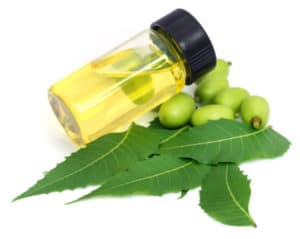
source Stock.adob.com
Ingredients:
- bring 2 to 4 tablespoons of neem oil.
- Pour 5-10 drops of pure tea tree oil in a container and blend well before use.
Method:
similarly, Message the whole entire body gently and later on take a shower. Follow this remedy twice a day.
Tea Tree Oil home remedies n° 3
The cayenne pepper doesn’t cure scabies. However, it contains capsaicin, which is effective in reducing pain. It has a numbing effect that reduces pain caused by scabies.
Ingredients:
- just 1 cup of cayenne pepper (powder)
- 15-20 drops of pure tea tree oil in a utensil and blend well before use.
Method:
Now fill your tub with hand-hot water and add the cayenne pepper powder with tea tree oil mixture to the water. Soak your body until your neck. Confirm the pepper water doesn’t get into your eyes. Then, Soak for 20 minutes or till the water becomes cold. Wash with plain cold water. Pat your skin dry. Follow it once every day.
Tea Tree Oil for Scabies home remedies n° 4
Epsom salt alone cannot treat scabies. Epsom salt is often used in bath soaks for its rejuvenating effects. Also, it acts as a dispersant and helps to mix tea tree oil in water.
Ingredients:
- you have got to require regarding 1 cup of Epsom salt
- 2 tablespoons carrier oil (use coconut or olive oils)
- 30 drops of pure tea tree oil in an exceeding bowl and blend well before use.
Method:
Diluted the tea tree oil with the carrier oil. Mix the Epsom salt and oil mixture in a bowl. Preserve it in a jar. Prepare a soak with lukewarm water and add the salt mix as required. Soak your body until the neck for at least 20 minutes or until the water cools down completely. Pat your skin dry.
Tea Tree Oil mixture for scabies n° 5
Aloe vera gel is known for its skin-soothing properties. However, it is also effective for treating scabies. An introductory study shows that aloe vera gel is as effective as benzyl benzoate in treating scabies.
Ingredients:
- you have got to require regarding ½ cup pure aloe vera gel (freshly scooped)
- 2 tablespoons neem oil
- 15–20 drops of pure tea tree oil in an exceeding bowl and blend well before use.
Method:
Use a blender to blend the freshly scooped aloe vera gel. Mix the aloe vera gel, neem oil, and tea tree oil in a bowl. Massage the mixture all over your body. Let it stay for at least 30 minutes to an hour. Wash it off. Follow this one to two times every day.
Tea Tree Oil home recipe n° 6
Clove oil is lethal for scabies mites. It contains Eugenol, which can kill scabies mites within an hour of interaction.
Ingredients:
- Get pure clove essential oil.
- pure tea tree essential oil in an exceeding bowl and blend well before use.
Method:
Fill up the tub with heartfelt water. Add 5-6 drops each of clove and tea tree oils. Then, Soak in the water for at least 20 minutes. Pat your skin dry, to apply just one to two times every day.
Disclaimer:
In the end, It is advisable (especially if you are pregnant, breastfeeding, or have any medical concerns) to visit a doctor and ask for a prescription before using any of the remedies or OTC treatment.

References
- “Essential oil of Melaleuca, terpene-4-ol (tea tree oil): ISO 4730: 2017 (E)”. International Organization for Standardization (ISO), Geneva, Switzerland. 2017. Retrieved 2 February 2019.
- “Opinion on Tea tree oil” (PDF). SCCP/1155/08 Scientific Committee on Consumer Products. 16 December 2008.
- “Tea tree oil”. National Center for Complementary and Integrative Health, US National Institutes of Health. 2011-11-09. Retrieved 30 May 2016.
- Thomas, J; Carson, C. F; Peterson, G. M; Walton, S. F; Hammer, K. A; Naunton, M; Davey, R. C; Spelman, T; Dettwiller, P; Kyle, G; Cooper, G. M; Baby, K. E (2016). “Therapeutic Potential of Tea Tree Oil for Scabies”. The American Journal of Tropical Medicine and Hygiene (Review). 94 (2): 258–266.
- Pazyar, N; Yaghoobi, R; Bagherani, N; Kazerouni, A (July 2013). “A review of applications of tea tree oil in dermatology”. International Journal of Dermatology. 52 (7): 784–90
- Carson, C. F.; Hammer, K. A.; Riley, T. V. (2006). “Melaleuca alternifolia(Tea Tree) Oil: A Review of Antimicrobial and Other Medicinal Properties”. Clinical Microbiology Reviews. 19 (1): 50–62.
- Billee Sharp (18 September 2013). Lemons and Lavender: The Eco Guide to Better Homekeeping. Cleis Press. pp. 43–. ISBN 978-1-936740-11-6.
- Cross SE, Russell M, Southwell I, Roberts MS, 2008. Human skin penetration of the major components of Australian tea tree oil applied in its pure form and as a 20% solution in vitro. Eur J Pharm Biopharm 69: 214–222.
Antimicrobial activity
9. Carson C, Riley T, 1995. Antimicrobial activity of the major components of the essential oil of Melaleuca alternifolia. J Appl Bacteriol 78: 264–269.
10. Sherry E, Sivananthan S, Warnke PH, Eslick GD, 2003. Topical phytochemicals used to salvage the gangrenous lower limbs of type 1 diabetic patients. Diabetes Res Clin Pract 62: 65–66
11. Hartman D, Coetzee J, 2002. Two US practitioners’ experience of using essential oils for wound care. Wound Care 11: 317–320.
12. Robin BN, 2008. Unpatentable drugs and the standards of patentability. Tex L Rev 87: 503.
13. Roos TC, Roos S, Merk HF, Bickers DR, 2001. Pharmacotherapy of ectoparasitic infections. Drugs 61: 1067–1088.


